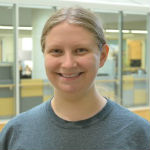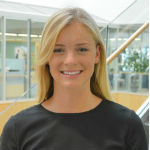Announcing the Results of the 2017 America’s Got Regulatory Science Talent Competition
At the Fourth Annual “America’s Got Regulatory Science Talent” competition, hosted as part of the CTSI Regulatory Science programs, eight teams of students competed for a chance to present their ideas on how to solve regulatory science issues in person at the Food and Drug Administration. Competition organizers Scott Steele, Ph.D., and Joan Adamo, Ph.D., kicked off the event and each team delivered a five-minute presentation proposing novel solutions to address challenges in the nine scientific priority areas outlined in the FDA’s Strategic Plan for Advancing Regulatory Science.
Thank you to all students who participated and congratulations to the top three finishers, whose proposals are summarized below:
First place: Simple English Explanation Directive (SEED)
Bethany Lennox, graduate student in the Center for Medical Technology and Innovation

Despite the Plain Writing Act of 2010, which requires government agencies to use clear, accessible language when communicating with the public, clinical trial information available through the FDA is still quite dense and complex. The Simple English Explanation Directive would require clinical trial sponsors who register their studies on clinicaltrials.gov, the FDA’s online clinical trial warehouse, to provide a cover page describing the study, its purpose, and any results in plain language. A survey on clinicaltrials.gov would assess whether the cover pages are truly easy to understand and offer feedback to guide future improvements.
Ultimately, this directive aims to help consumers understand the scope, design, and impact of clinical trials and possibly find studies to participate in. However, it could also help doctors and industry professionals find studies more quickly, which would keep them abreast of treatment options for patients, spark collaborations, and expand research.
Click here for the Simple English Explanation Directive (SEED) presentation slides.
Second place: 3-Defining Patient Matched Implants
Kerry Donnelly and Brittany Garrison, graduate students in the Center for Medical Technology and Innovation


Medical applications for 3D printing are on the rise, including many new ways to use patients’ medical images (CT scans or MRIs) to print customized implants. This personalization ensures a perfect fit for the patients, but could also introduce variation in structural integrity, safety, and efficacy from patient to patient.
Currently, structural integrity of 3D printed products is assessed via destructive testing of a single representative sample created during the final product print, which is not an ideal way to test personalized implants. In May of 2016, the FDA released a document regarding regulations and technical consideration for 3D printing of medical products, which unfortunately left a lot of uncertainty as to which regulations pertain to customized 3D printed products.
To ensure safety and efficacy of each personalized patient implant, Donnelly and Garrison propose a streamlined system to identify the weakest component of a personalized device and print a duplicate of that “weak link” for destructive testing. The weakest link would be identified using Finite Element Analysis software that predicts a products reaction to real-world forces.
Click here for the 3-Defining Patient-Matched Implants presentation slides.
Third place: Regulatory Innovation Science Expert (RISE) Initiative
Simeon Abiola, Translational Biomedical Sciences graduate student, and Solomon Abiola, M.S., Computer Science and Translational Biomedical Sciences graduate student.

 The FDA medical device approval process is complex and can be quite difficult to navigate – especially for industry outsiders, like entrepreneurs and technology companies. To get a medical device to market, it must be compared against a similar device currently legally marketed, called a predicate device. The new device must perform better, be safer or more effective than the predicate to gain FDA approval.
The FDA medical device approval process is complex and can be quite difficult to navigate – especially for industry outsiders, like entrepreneurs and technology companies. To get a medical device to market, it must be compared against a similar device currently legally marketed, called a predicate device. The new device must perform better, be safer or more effective than the predicate to gain FDA approval.
Simply identifying a predicate device has been a significant hold up for Simeon Abiola, who is an entrepreneur. He and his team have sifted through 40,000 FDA approved devices, unable to narrow that to the handful needed for FDA premarket approval. This is just one example of how opaque FDA processes stymie innovation and productivity in the US.
To remedy this, the Abiola brothers propose the Regulatory Innovation Science Expert (RISE) Initiative, a computer expert system that would provide guidance on how to navigate the FDA approval process. RISE would analyze clinical trials and FDA predicate device databases to determine which new devices are likely to succeed. Then it would provide predictive guidance to medical device developers before they go through the full FDA approval process, providing them feedback in real-time and helping them develop applications that are more innovative and likely to succeed.
###
Judges for the competition included Jean-Philippe Couderc, Ph.D.,M.B.A., associate professor of Cardiology at the University of Rochester Medical Center and assistant director of the Heart Research Follow-up Program, David H. Foos, M.S., chief technology officer at Carestream Health, and Ann Dozier, Ph.D., chair of the Department of Public Health Sciences in the University of Rochester School of Medicine and Dentistry.
Michael Hazard |
2/24/2017
You may also like